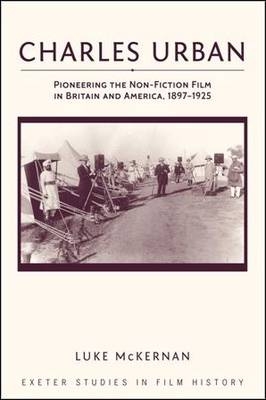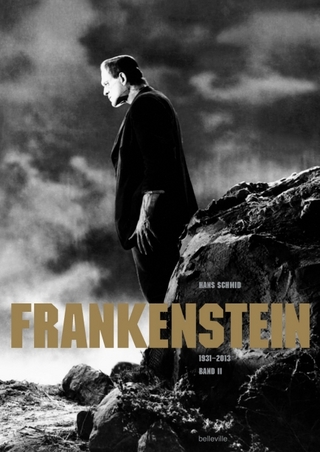
Charles Urban
Pioneering the Non-Fiction Film in Britain and America, 1897 - 1925
Seiten
2013
University of Exeter Press (Verlag)
978-0-85989-882-9 (ISBN)
University of Exeter Press (Verlag)
978-0-85989-882-9 (ISBN)
Based on original research from Charles Urban’s own papers, this is the first biography of this influential film maker and innovator. A historical study of the development of the non-fiction film in Britain and America in the early years of cinema. Winner of the Kraszna-Krausz Moving Image Book Award 2014. 24 b&w illus. First time in paperback.
Charles Urban was a renowned figure in his time, and he has remained a name in film history chiefly for his development of Kinemacolor, the world’s first successful natural colour moving picture system. He was also a pioneer in the filming of war, science, travel, actuality and news, a fervent advocate of the value of film as an educative force, and a controversial but important innovator of film propaganda in wartime.
The book uses Urban’s story as a means of showing how the non-fiction film developed in the period 1897-1925, and the dilemmas that it faced within a cinema culture in which the entertainment fiction film was dominant. Urban’s solutions – some successful, some less so – illustrate the groundwork that led to the development of documentary film. The book considers the roles of film as informer, educator and generator of propaganda, and the social and aesthetic function of colour in the years when cinema was still working out what it was capable of and how best to reach audiences.
Luke McKernan also curates a web resource on Charles Urban at www.charlesurban.com
Charles Urban was a renowned figure in his time, and he has remained a name in film history chiefly for his development of Kinemacolor, the world’s first successful natural colour moving picture system. He was also a pioneer in the filming of war, science, travel, actuality and news, a fervent advocate of the value of film as an educative force, and a controversial but important innovator of film propaganda in wartime.
The book uses Urban’s story as a means of showing how the non-fiction film developed in the period 1897-1925, and the dilemmas that it faced within a cinema culture in which the entertainment fiction film was dominant. Urban’s solutions – some successful, some less so – illustrate the groundwork that led to the development of documentary film. The book considers the roles of film as informer, educator and generator of propaganda, and the social and aesthetic function of colour in the years when cinema was still working out what it was capable of and how best to reach audiences.
Luke McKernan also curates a web resource on Charles Urban at www.charlesurban.com
Luke McKernan is a film historian and Lead Curator of Moving Image at the British Library. He has written widely on early film for a number of academic journals and also curates a web resource on Charles Urban at www.charlesurban.com
List of Illustrations
Acknowledgements
Note
Introduction
1. ‘That Slick Salesman in the Silk Hat’
2. We Put the World Before You
3. The Eighth Wonder of the World
4. The Motion Picture Object Lesson for America
5. The Living Book of Knowledge
Conclusion
Notes
Select Bibliography
Index
| Reihe/Serie | Exeter Studies in Film History |
|---|---|
| Verlagsort | Exeter |
| Sprache | englisch |
| Maße | 156 x 234 mm |
| Themenwelt | Kunst / Musik / Theater ► Film / TV |
| ISBN-10 | 0-85989-882-2 / 0859898822 |
| ISBN-13 | 978-0-85989-882-9 / 9780859898829 |
| Zustand | Neuware |
| Haben Sie eine Frage zum Produkt? |
Mehr entdecken
aus dem Bereich
aus dem Bereich
Filmtechnik, Bildgestaltung und emotionale Wirkung
Buch | Hardcover (2024)
Carl Hanser (Verlag)
CHF 62,95


